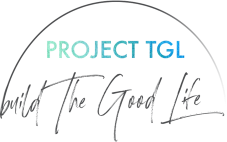It’s Berlin: 1920s. The clatter of cups on saucers. The wafting aroma of coffee. The buzz of eager students debating the hot new theories of Sigmund Freud and Albert Einstein. Kurt Lewin, a psychology professor, is meeting a student of his, Bluma Zeigarnik. He’s been to this café countless times before, but today Zeigarnik makes a new observation about the waiters:
“They never wrote down orders. They kept them in their head, adding items mentally— . . . another espresso . . . a cup of tea . . . a slice of kuchen . . . —until the bill was paid. Yet once the bill was paid—if, after paying, you questioned what was on the tab—they’d have forgotten the entire order. No recollection at all.” (Benedict Carey, How We Learn, p.135)
What Lewin and Zeigarnik noticed that day has since been backed up by scientific studies: unfinished tasks stick in your memory much better than finished ones. Once you know this, you can also choose to deliberately open loops.
This can be a powerful procrastination-beating tool. Very often, the biggest hurdle to completing a large project is getting started. So, why not just get started? Tiptoe past your brain’s fight or flight response, and allocate just five, ten, or fifteen minutes to make a start on that big project. You don’t need to commit any more than that, because 5–15 minutes is enough to open the loop. Make sure to finish your initial 5–15 minute session by asking yourself: what needs to happen next? Maybe you’ll have an answer right away. If so, great! This is your open loop: it will bounce around your brain until you make the time to do it. If you can’t think of what needs to happen next, then you’re stuck – you have a problem to solve.
Problem-solving is the second big benefit (after beating procrastination) of open loops. Spend some minutes brainstorming solutions, and when you get stuck… stop. Walk away. Don’t think about it anymore.
When you’ve approached a problem from different angles trying to solve it, you’ve sent your brain the message that this problem is important. When you walk away, your brain keeps working on the problem in the background. Much of the time, the next time to you sit down to address the problem you’ll realise that you already know the solution. This is called percolation, and it means that “we should start work on large projects as soon as possible and stop when we get stuck, with the confidence that we are initiating percolation, not quitting.” (Benedict Carey, How We Learn, p.147)
Forget about amassing colossal amounts of willpower to start that huge project, or to push through that feeling of stuck-ness. Instead, take two tiny steps: take 5–15 minutes to get started, and when you get stuck, stop.




